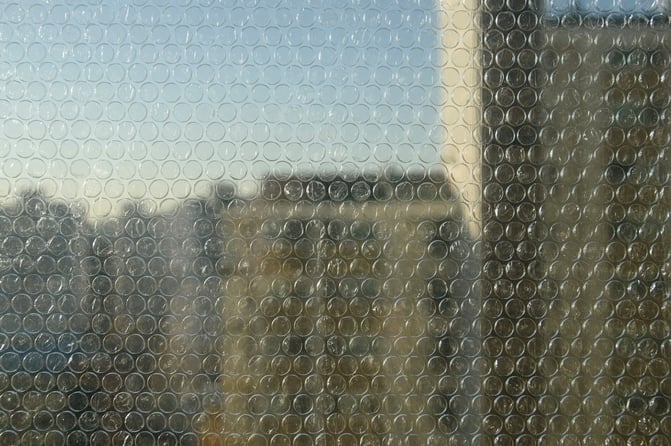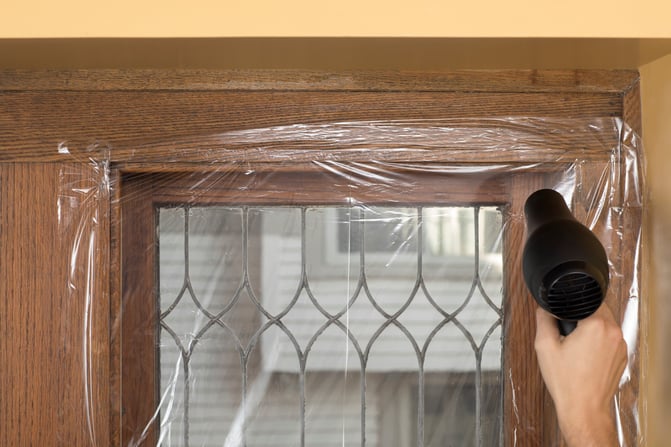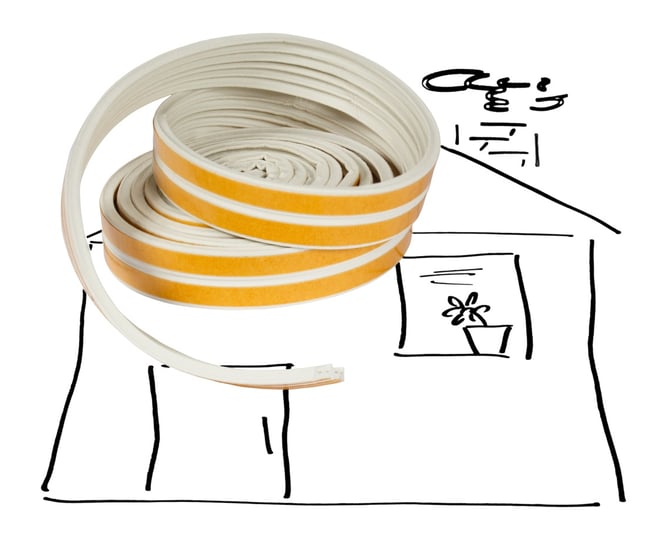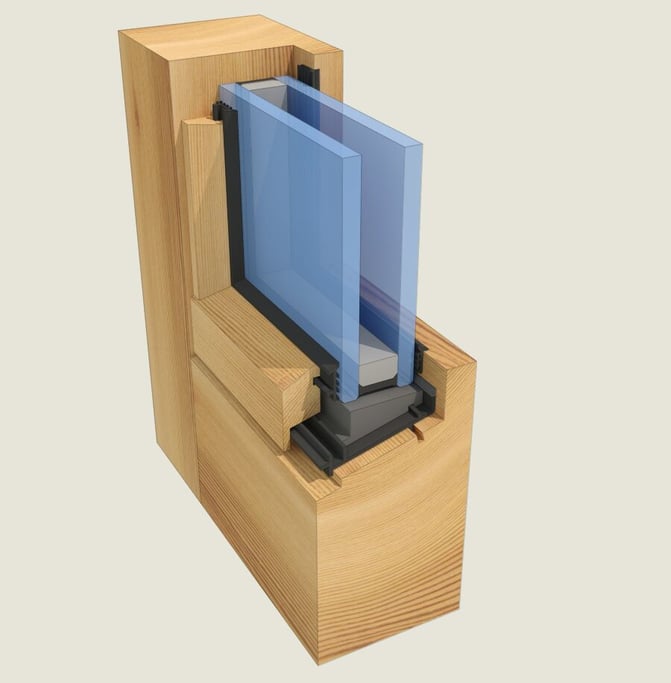When the weather starts to drop again and your heating bill starts going up, you may want to try out different DIY window insulation methods to help keep the warm air in and those cold drafts outside.
The only problem is, do-it-yourself tricks, like using a special window plastic for winter or buying an interior window insulation kit, can only do so much to insulate your windows.

It certainly is possible to get a small improvement, retaining more of your interior’s warmth. This may be all that you need, at least until you use a more practical solution for window insulation.
Here’s a look at the possible DIY methods you can use on your windows for winter weather, including the strengths and limitations of each.
Bubble Wrap Window Insulation
Does bubble wrap on windows really work? Try it. You can attach a layer of bubble wrap insulation over the interior of your window glass. Be sure to secure it in place; the goal is to leave as few openings for air to pass through as possible.

To use bubble wrap, first cut the plastic so it will fit the exact dimensions of your interior window pane. You can spray water on the glass with a spray bottle and then attach the bubble wrap, using the water as an adhesive. This makes it easier to remove your DIY window insulation if you want to open your windows to let in fresh air. You can also secure the bubble wrap with a strong tape.
Whilst the idea of attaching bubble wrap has its appeal – it is, after all, one of the fastest and cheapest methods to insulate windows with – it does have a few drawbacks:
- Poor insulation;
- You aren’t going to notice a significant difference in your home’s temperature or on your energy aaabill; and
- This is particularly the case on windy days as the bubble wrap can’t stop drafts.
It’s only capable of slowing down thermal movement a bit.
Also, bubble wrap is possibly the most unsightly DIY thermal insulation solution, which makes it more useful for out-of-sight windows, like an attic or laundry room. You won’t be able to see clearly through the window, and you probably won’t want anyone else to see your plastic bubbles covering your windows. But, if you need a temporary quick fix, and you have bubble wrap on hand, the air-filled plastic will have some insulation benefits.
Plastic Window Covers for Winter
Another option is to use a piece of plastic. You can buy a plastic window film – most home improvement shops carry a shrink film window insulation kit – or you can simply use the plastic shrink wrap you probably already have in your kitchen on your windows, along with some tape. However, a special plastic film from a kit will be thicker and heavier duty than any household shrink wrap.

As with bubble wrap, when securely put in place, putting plastic over windows for winter will help a little, but only so much. You’ll still have to contend with drafts as the plastic won’t seal your windows. The primary limitation you’ll still have is the single glazed window itself.
The average home loses from 21% to 31% of its heating through its windows. When you look at how heat loss occurs with single glaze windows, you’ll understand why, as long as you only have a single glaze, you’ll always have thermal insulation issues.
- Glass naturally absorbs thermal energy (heat).
- When it does this, absorbing the heat from your home – which it is still going to do with bubble aaawrap and plastic attached – it will then automatically radiate the heat energy.
- This is where your heat loss occurs with a single glazed window. The process of absorbing aaawarmth and then radiating it outdoors is ongoing.
Unfortunately, this means your heat is still escaping, even with all that plastic or bubble wrap. This is why you won’t see a big difference on your energy bills with DIY window insulation.
Insulation Tape for Windows and Doors
Another DIY trick is to use a special insulation tape around your windows and doors. Insulation tape doesn’t cover the entire window pane like plastic and bubble wrap so it won’t slow your heat loss.

What it does, is it helps to stop window drafts in the winter.
You can apply insulating tape around your windows in addition to covering your windows for the best DIY results possible. This won’t solve your heat loss issues completely, but a combined effort can help to make your home feel more comfortable and you may be able to use less energy to keep your home warm in the winter.
However, you’ll have sacrificed the true function of your windows in the process – being able to see outside and letting in that beautiful natural light. Unless you cover your windows with drapes or blinds (which you may be inclined to do so you don’t have to look at all that plastic and tape), some light will still enter. But, you’ll lose the visual clarity and appealing ambience your windows had always provided.
The DIY and New Double Glazing Alternative
The issue for a lot of homeowners is, they really want the benefits of energy efficient windows – the lower energy bills, the increase in home value, reduced household carbon footprint – and, of course, the comfort of having a well-insulated home in the winter.
But, replacing your windows with new double glazed windows can be cost-prohibitive.
DIY methods are much cheaper. But, they aren’t powerful enough to give you back the financial return from long-term energy savings. Not to mention the fact that they come with the aesthetic and functionality drawbacks of having to deal with plastic and tape every time you want to look at or open your windows.
The ultimate – and simple – solution to this complex problem lies in advanced window technology.
Over the past few years an alternative, retrofit double glazing system, has been developed. And improved upon. Thermawood’s unique, patented dry Retrofit Double Glazing System offers more benefits beyond the typical retrofitting project, including better indoor air quality with inherent condensation prevention and the ability to preserve older windows in heritage buildings, like classic double hung windows.
How does retrofit double glazing work? Why is it more affordable?
As with retrofitted double glazed windows, the single glazing is replaced by an insulated glass unit, or IGU.

An IGU consists of two panes of glass and a sealed air space, which when combined slow down the movement of thermal energy dramatically. This will keep your home significantly more comfortable all year round.
You can also customise your IGU with features to get the results you want, whether it’s even better insulation in the winter, summer or year-round, enhanced acoustic performance and improved security.
When retrofitting, Thermawood uses a specially designed system, which leaves your current timber joinery in place, whilst converting the single pane to your insulated glass unit.
It’s a seamless process that offers seamless results, at about a third of the cost of having new double glazed windows installed.
Try do-it-yourself window insulation methods to help with drafts and heat loss in the winter if you want to, but don’t think your only options are cheap DIY solutions or expensive new double glazed windows. Retrofit double glazing is an alternative that offers the same benefits as having new energy efficient windows installed, without the price point or hassle.






